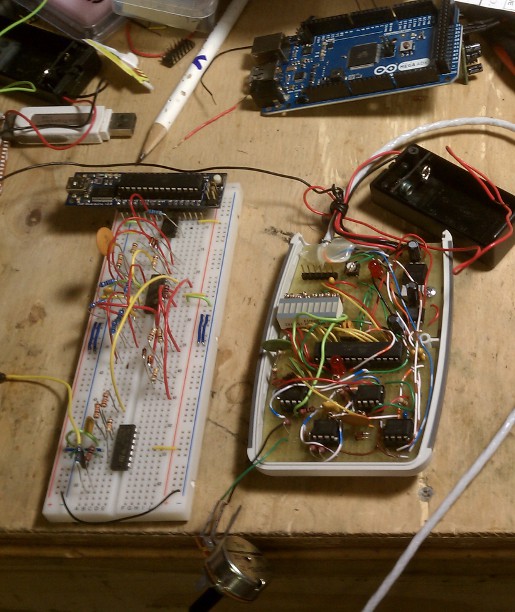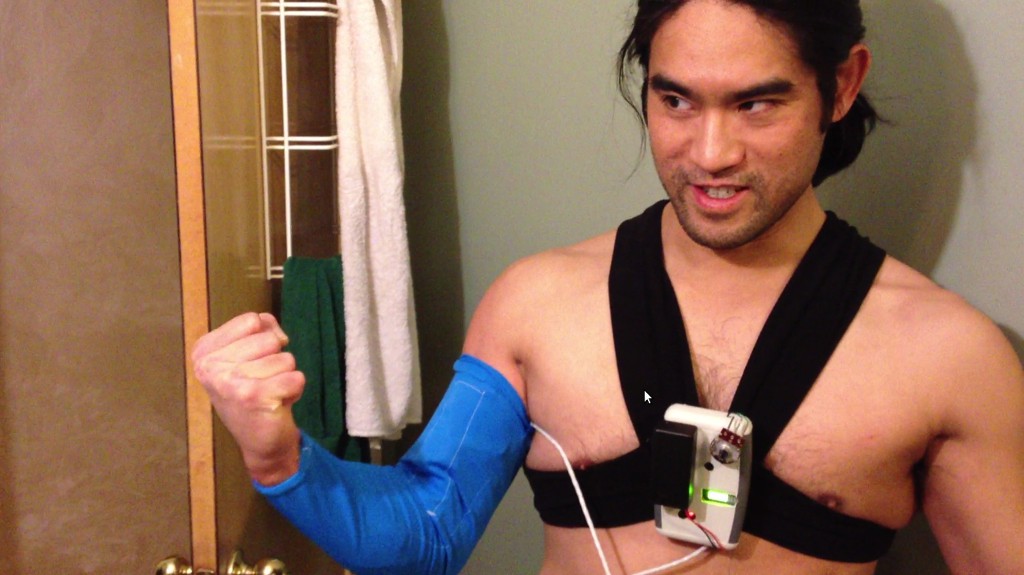So, I had my requirements in my head for this next version. It had to be:
- Integrated into one unit
- Be easier to use
- Be wearable.
- The current set of op-amps needed better impedance values, in particular the differential amplifier which connected to the electrodes. Which meant a whole new set of op-amps
- Be easy to reprogram on the fly
I came up with this.

I also added a milspec shielded cable, since I noticed that the signal also got interference from, I'm not sure, static, EMF radiating from my body, whatever. The milspec cable had a nice shielding Faraday cage type around the wire strands, which I grounded.
Next, it was time to test it.

And you can see it in action here.
You can see how much cleaner the response is, versus my quick and dirty prototype. Oh man, it was a revelation! A few other innovations I incorporated are the electrode placement methods on the sleeve. I used velcro on the backs of the electrodes, and there's velcro inside the sleeve. This let's me adjust the position of the electrode on the fly. Now obviously, I wouldn't wear the pod like that, that's just asking for it if you fall on your chest. Also, it was a massive improvement over the Advancer circuit, which used this tiny analog pot to change gain values, and that pot usually died after 4 uses. So I replaced it with a BIG POT. Oh man, talk about way better.
Still, I ran into a bunch of problems with this one.
- The electrode contacts were uncomfortable. I was still using copper plates hot glued to velcro straps
- While this version was reprogrammable, and the chips were socketed so I could replace burnt chips, I had random shorts and connection issues because I was hand soldering wired jumper fashion to various pin outs. There was slag and left over solder EVERYWHERE. Talk about a headache debugging.
- I needed more LED lights to indicate my level. The Atmel Digital PWM's wasn't enough. That meant I needed an LED driver.
- The bigger pot was nice. But really inelegant. I wanted something I could digitally control.
- I was still oversaturating the op-amps. I needed a lower gain.
So, it was back to the drawing board with another design! But at the same time, it also meant I was getting close to a real product. And that meant generating a master plan...
 Casual Cyborg
Casual Cyborg
Discussions
Become a Hackaday.io Member
Create an account to leave a comment. Already have an account? Log In.